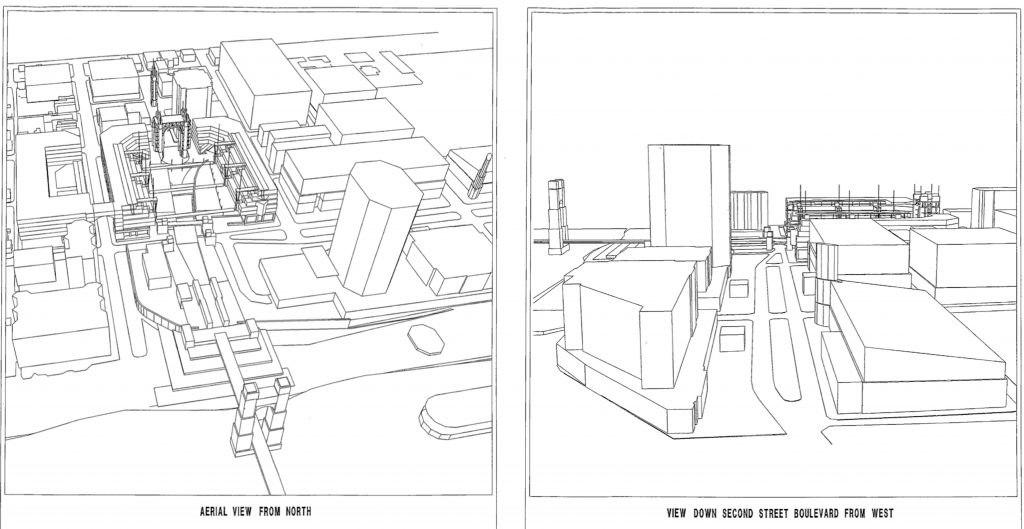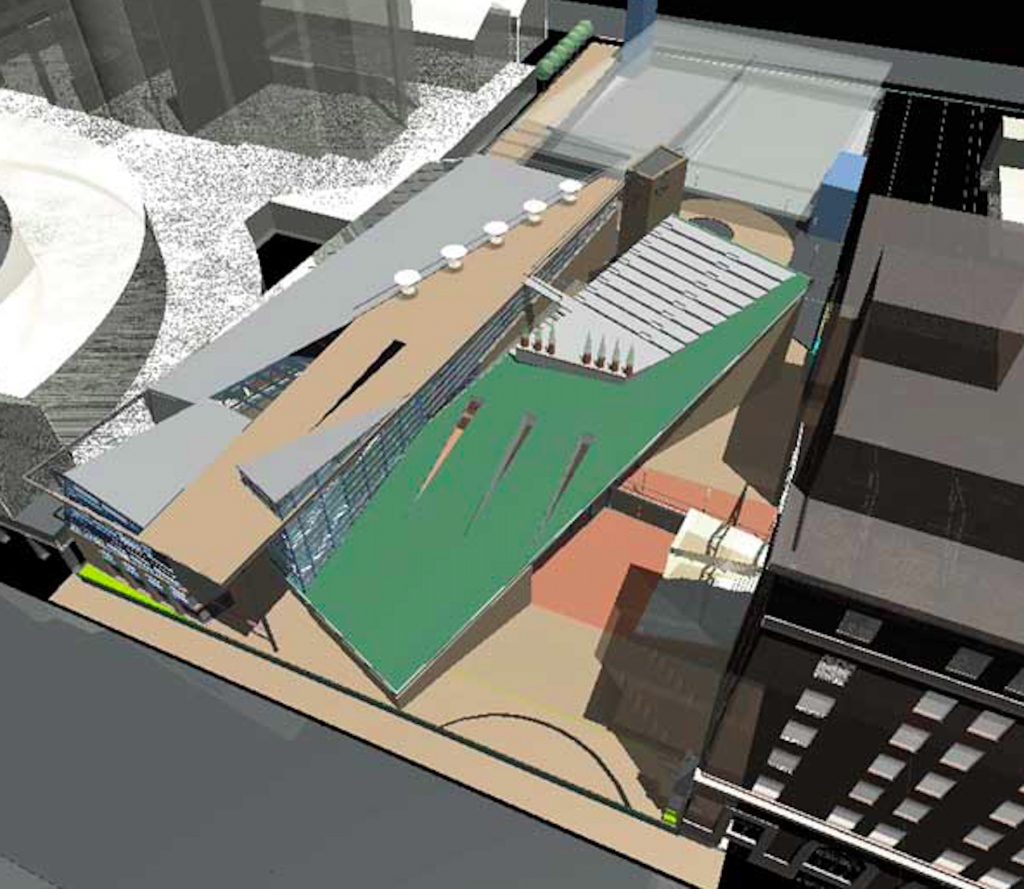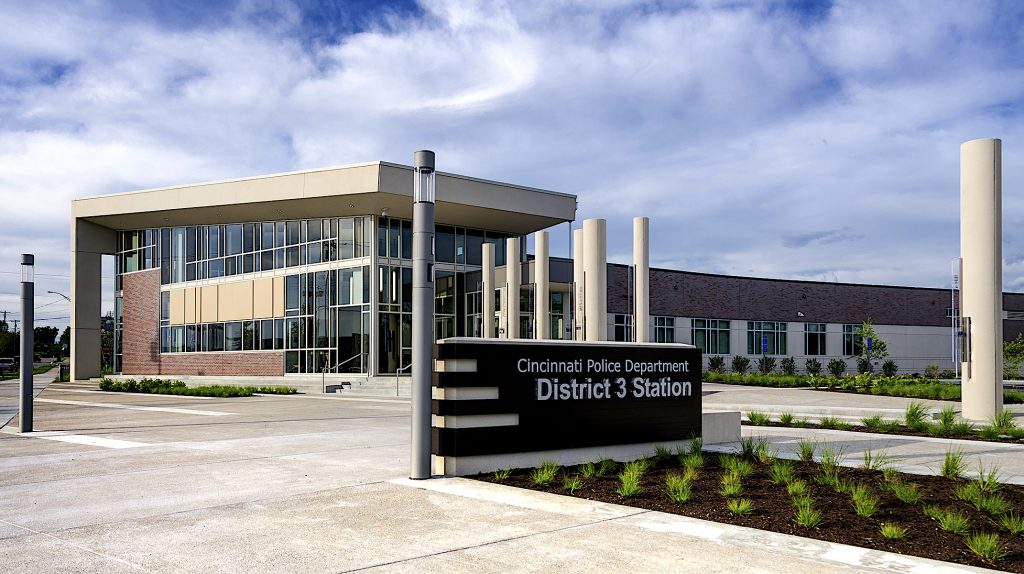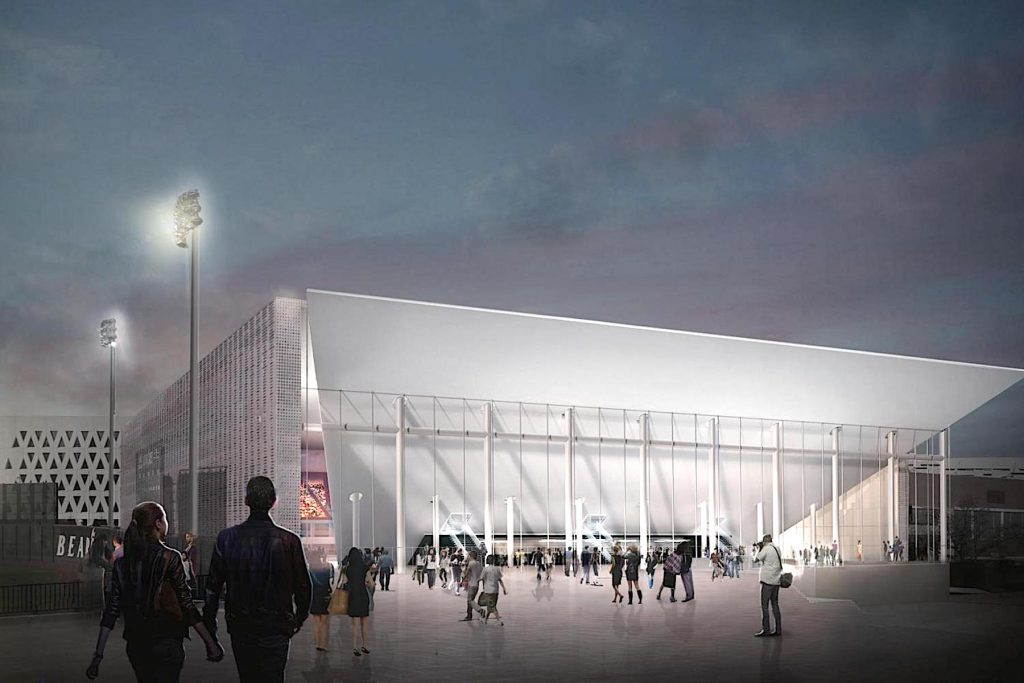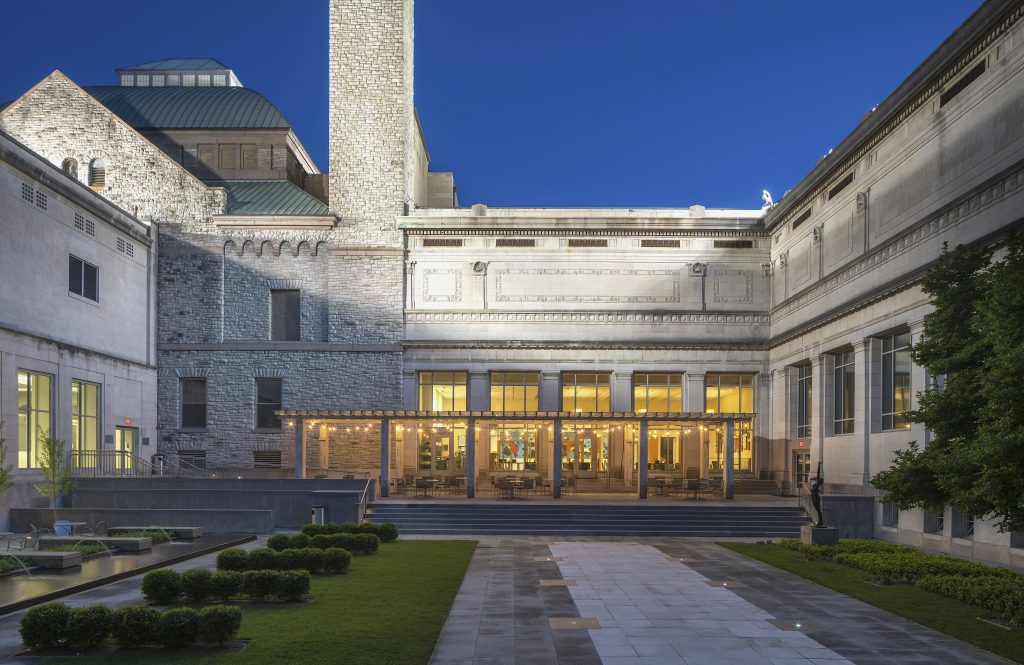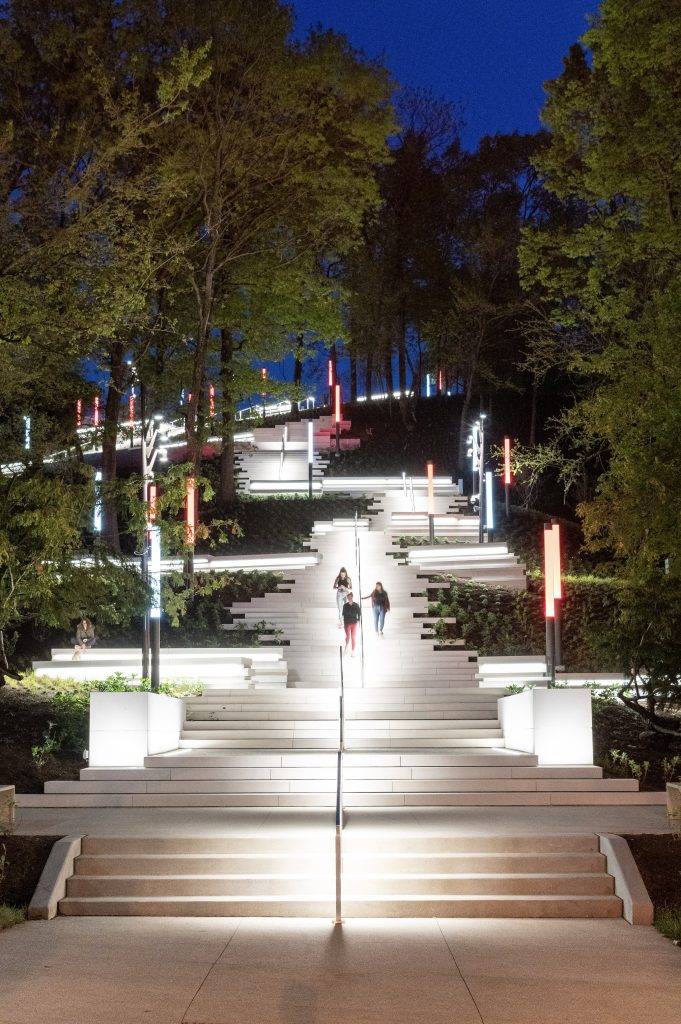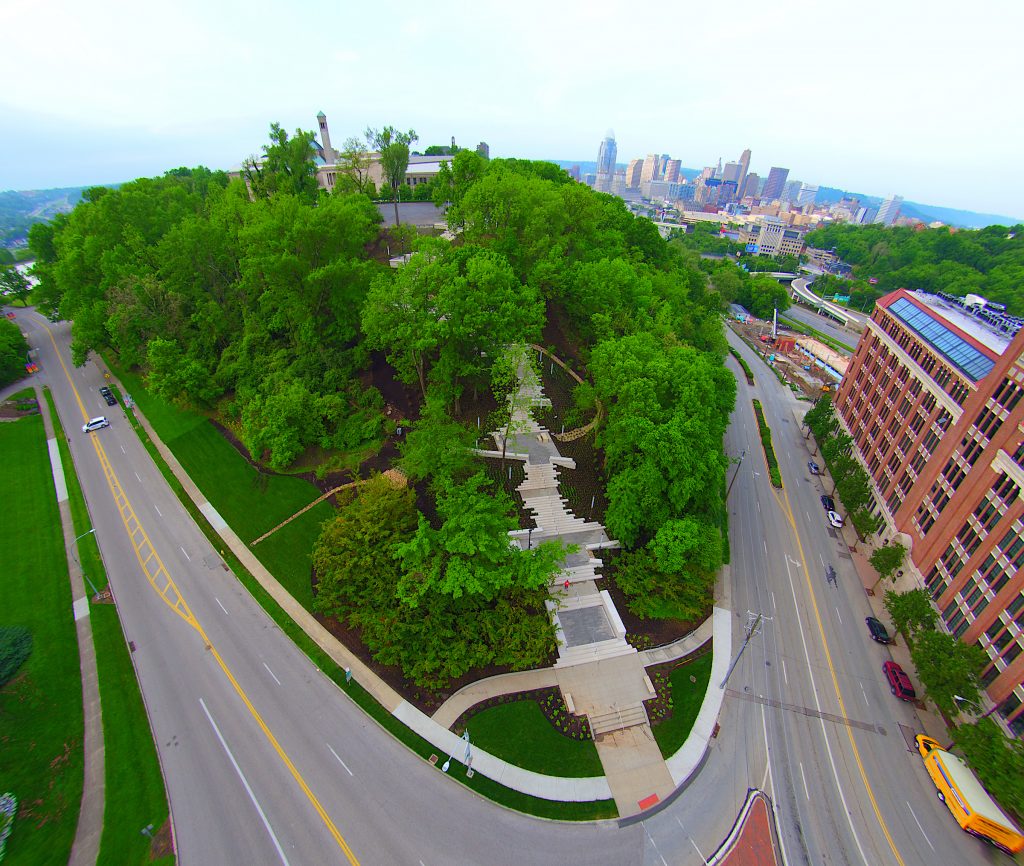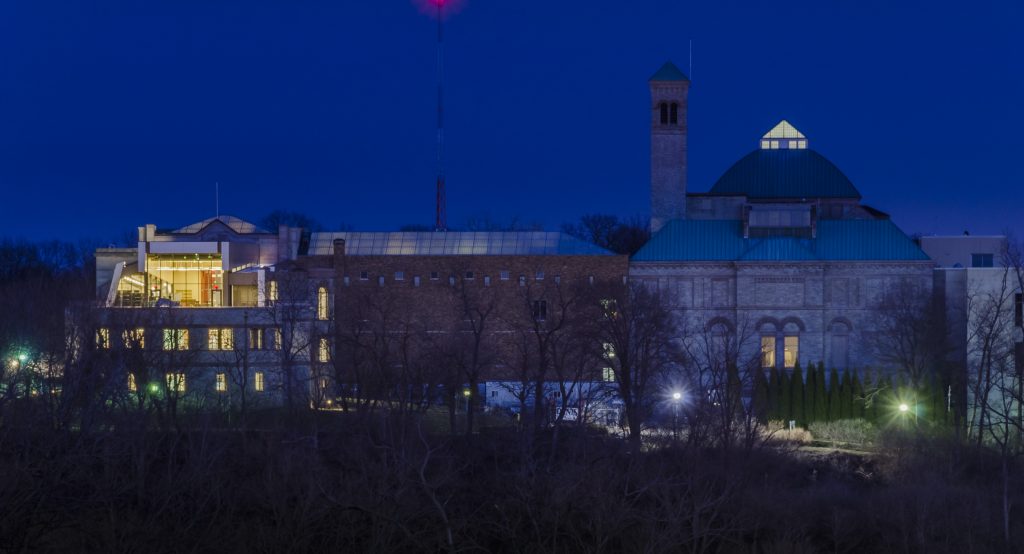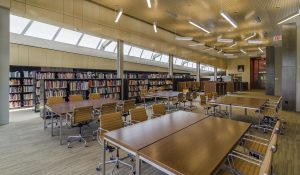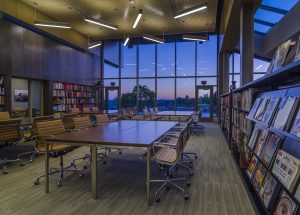One thing about competitions, and having the fortunate experience I’ve had, I’ve really learned that being ambitious for your client and society is hugely important. – James Cheng
This is Thursday, April 11, 2024, and I am in the office of emersion DESIGN with architect James Cheng and J.T. Spence, the latter the former planner of the City of Covington, Kentucky, who was responsible for initiating the Covington Gateway Competition in 1993, won by James Cheng. -Ed

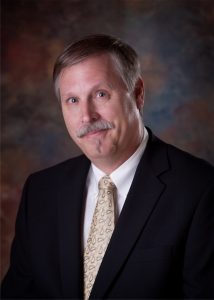
Architect James Cheng (left) Prof. John T. Spence (right)
COMPETITIONS: A question I almost always start off with: At what point in your early life did you decide to become an architect?
James Cheng: It really all started when I was in junior high and high school and really loved my art classes. So I told my dad, who was a chemical engineer, that I wanted to become an artist, and he said, there is no way I’m going to pay for you to become an artist. He had just come back from New Orleans where he saw all these starving artists painting and trying to sell their paintings. So he suggested that I try architecture. We did have a family friend who was an architect. So he had me talk to him, and my dad then found a program for rising high school seniors at Cornell—a little like a summer camp for architecture. This happened to be a wonderful fit for me; but I would not have known about it otherwise at the time. Having been involved in the Arts community, such as the Contemporary Art Center, I can see how difficult an artist’s life is. So I feel really fortunate that I ended up in the architecture profession.
COMPETITIONS: After Cornell, was the Covington competition the first one one you ever entered?
JC: No, I believe I entered a competition for Spectacle Island with some friends; and then there was a small house competition.


Model of Covington Gateway competition winner ©James Cheng
COMPETITIONS: As for the Covington competition, besides our announcement of it, it was pretty well publicized, even internationally. At that time the National Endowment for the Arts had begun to support competitions and may have provided some support for the Covington competition.

J.T. Spence: Jeffry Ollswang (competition adviser) may have somehow been involved with that; but the City of Covington was responsible for the entire support of the competition. It was well publicized: we did posters and mailings, and we received 110 entries globally, from Australia, Japan and seven countries.
JC: I often went to the DAAP library (University of Cincinnati) and may have seen it in COMPETITIONS magazine there.
COMPETITIONS: We never met when you won the competition in Covington. But I was quite familiar with it as we had published an announcement about the competition in our magazine and I was present when the entries were set up for judging. I wondered that the Mayor of Covington never showed up for the events I attended, and thus thought this might be an unfortunate omen for the further development of the project.
JTS: That’s not as impactful as you might think, because Covington has a weak mayoral form of government. Moreover, our mayor had just returned from spending two weeks at the Mayors’ Institute of Design (in Washington) with its founder, Charleston Mayor, Joseph Riley. So he was very supportive of the idea of a competition. It was the other four elected officials that had no outward appreciation for what it meant. So I think they were less motivated to have the Mayor get credit for something in the city and (give the appearance of) diminishing their leadership role in the city.
COMPETITIONS: I was very aware of the mission of the Mayors’ Institute of Design. We were in continuous contact with the people who were running it at the time.
JTS: They gave us a very different vocabulary about what we were trying to get across to the elected officials, which was a vision of Covington’s future.
COMPETITIONS: It’s always good to know what happened there, because politics almost always is involved.
JTS: This competitions almost didn’t occur because we couldn’t get the actual approval for getting the finances on the city agenda. I got very frustrated about this and actually gambled my career on approaching the mayor on this. It was the deadline for getting it on the agenda, and I caught the mayor getting on the elevator and reminded him that we were trying to do an international design competition, and would he be so kind to be sure it was on the agenda. By doing so, I went over the heads of all my superiors to do that. Had that not happened, we might not be sitting here today talking about it.
And the competition jury was amazing. Ralph Johnson from Perkins and Will actually flew in from Singapore, where they had a job, to be here on time. Another juror, Grady Clay (former Landscape Architecture Editor), was also very instrumental in translating the design so that people could understand it and appreciate how it would fit into the environment. When I became professor and started teaching urban design, I used Grady’s book and shared that with him.
Jeffrey Ollswang (competition adviser) helped immensely. I couldn’t have done it by myself. He allowed me to be a better communicator with the City, so that everyone always felt like they were participants in the decision making.
COMPETITIONS to JC: When you won that competition, although it didn’t get built, it did have an immediate effect on your career.
JC: I was already with KZF in Cincinnati: but after winning that competition, it certainly elevated my position in the firm. So I started taking on projects.
COMPETITIONS: So we might say you were in the design room. But now let’s jump ahead several years to 1999. You were shortlisted for a competition for an extension to St. Francis High school in Louisville. This was a very progressive high school in downtown Louisville that was looking for a design for an annex to its present facility to an older building.
St. Francis High School Addition Invited Competition (1999)
KZF/James Cheng was runnerup to the eventual winner
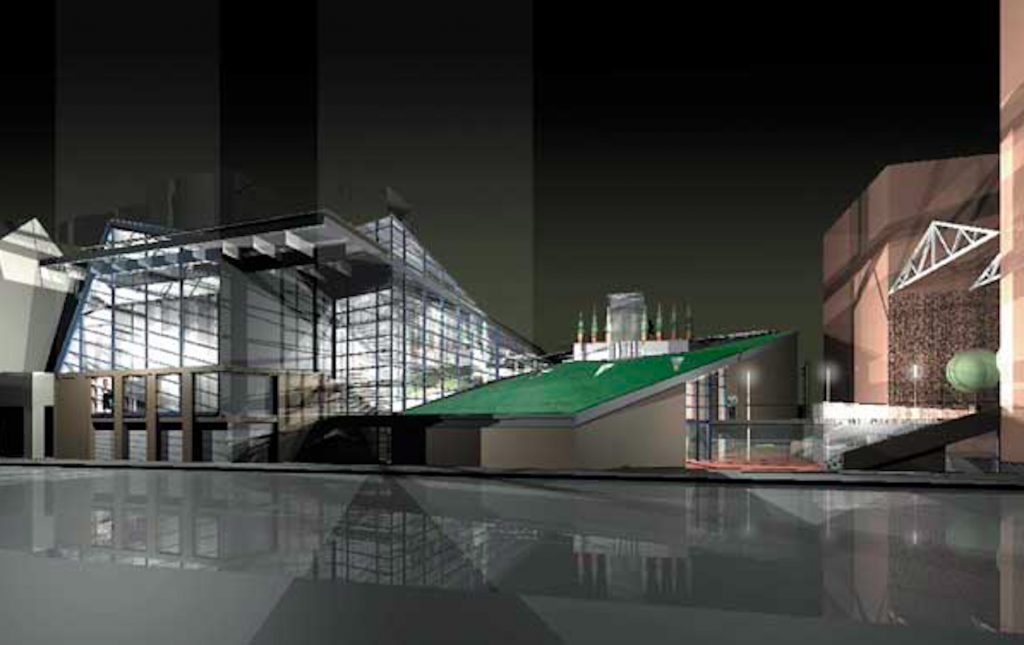
View from 3rd Street ©KZF/James Cheng
Your design didn’t come out on top, but was a very close runner-up. Jim Gibson, of Bickel-Gibson Architects, a very strong advocate of your design, had himself, together with two other architects from the University of Illinois, set up offices in Louisville after winning an important housing competition there that was actually realized. To make a long story short, the winning competition design was never built, as the school suddenly was confronted with a serious financial burden connected with the the existing building.
JC: The winning design was nice.
COMPETITIONS: You were at KZF at the time, but eventually went off on your own with four other architects in the same office.
JC: By the time that competition took place, I had become a design principal and part of the management of KZF. Eventually, I think there were some differences of opinion in the management of KZF as to the direction of the firm.
COMPETITIONS: Did this have something to do with the types of projects the firm was going after?
JC: I can’t be more specific about it, but there were several other people in the firm that were also not interested in where the firm was going. We all left separately, but since we knew that we all worked well together, we eventually decided to start a new firm. So that was the start of emersion DESIGN in 2007.
COMPETITIONS: When you founded the new firm, I was wondering if some of your former clients went with you.
JC: We didn’t take any work with us; but I think the people who joined together to form emersion were people who had very strong relationships, at least regionally, so folks recognized that the value that their consultants provided were in people themselves. So they hired us because of that. Also, there were some folks who were good at creating partnerships with other consulting firms, in a mutually beneficial situation where you really trusted each other. So some of those relationships came with us as well. They weren’t formalized relationships but more like relationships of mutual trust.
The previous firm (KZF) had almost one hundred people; so it had to be by nature more corporate. I think we felt that we all were very fortunate in being professionally successful and were interested in creating a firm that had more ideal aspirations. So we created a mission statement that we still have, which was ‘We advance clients who advance society.’ So it was about trying to make sure the work we do had some larger benefits.
School of Aerospace Medicine & Human Performance Wing (HPW) Research Laboratories
Wright Patterson Air Force Base, Ohio (2007-2011)
HPW was a KZF/Barge Joint Venture. James Cheng originally began working on the design with KZF. He completed his work on the project as an independent consultant to Barge after leaving KZF.
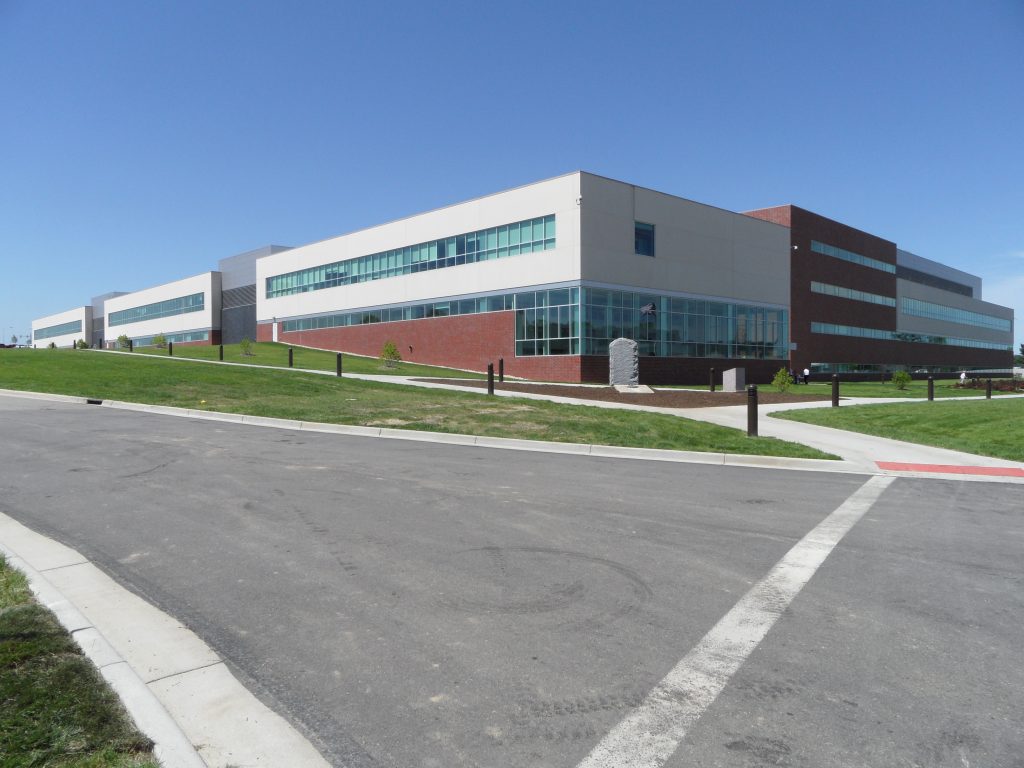
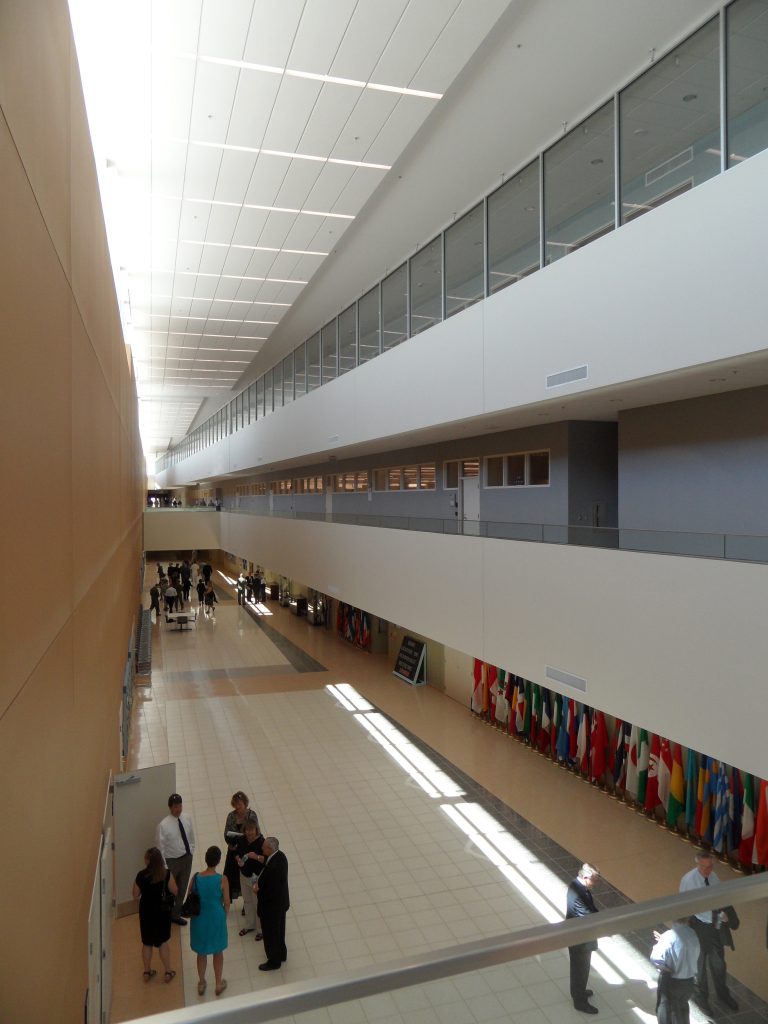
Street View (left) Interior perspective (right)
Above photos: ©James Cheng
COMPETITIONS: It’s unusual when architects are able to do that.
JC: Or afford to do it. Let me give you an example: When we did our strategic planning, not such a formal exercise, but rather visioning into the future, we didn’t look to new markets where we might make the most profits; we starting by saying, ‘what are societies greatest problems going to be in the future, who are the smart people solving these problems, how can we help them and how are we particularly well suited to help, and what new skills do we need to learn.’
We have faith, that if you do these things well, you’ll get paid, especially because of their own value to society. And society will need to pay for that.
COMPETITIONS: It’s always good to work for government, for you get paid.
Cincinnati Police District 3 Station – emersion DESIGN (2015)
This was the first net-zero-energy police station in the world

Above photos: ©Darrin Hunter/Dish Design
JC: That’s true. That actually helped us a lot, because initially when when we first founded the firm, the market leaders who had very strong relationships with federal government work were some of the founders in the firm.
JTS: Think of the perspective of the city as a government entity, thinking about the impact of a project, as opposed to the typical marketplace, which is maximizing profits in an expeditious way; whereas the people such as me working in civic government are thinking on a larger scale rather than personal profit. We had a different relationship with the people we had working with us.
COMPETITIONS: I was thinking about Covington, because there it was not about a competition for a single structure, but more about planning.
JTS: Yes, it was.
COMPETIITONS: For years, architects were not that interested in planning. I know some firms that were, and I’m thinking in particular about a firm in California, Moore Ruble Yudell that was big into planning. During the economic downturn in the early 90s, they realized sixty percent of their revenue from planning housing projects in Europe—mostly in Germany, but eventually in China.
JC: In that sense, I feel that the Covington competition was set up to benefit the city as a whole. It wasn’t just about one little piece of property; it was about how it enriched the context around it.
JTS: It was about what Covington could be and as a model for how to expand that perception of ‘We can control the future.’ We can decide what we want our city to be like. So this was important for making people understand that we weren’t just this little place in the Midwest; we were an exciting urban environment, enlivened by bringing people from all over the world to look at our community.
COMPETITIONS: There are almost no open competitions for important civic projects anymore; most of those are invited. And I see that you were involved in one in Cincinnati, for the redo of the University of Cincinnati’s arena. For that one you collaborated with AECOM.
University of Cincinnati Arena Finalist
Invited competition – emersion DESIGN in collaboration with AECOM.
AECOM was in charge of arena design, emersion DESIGN for the surrounding area.
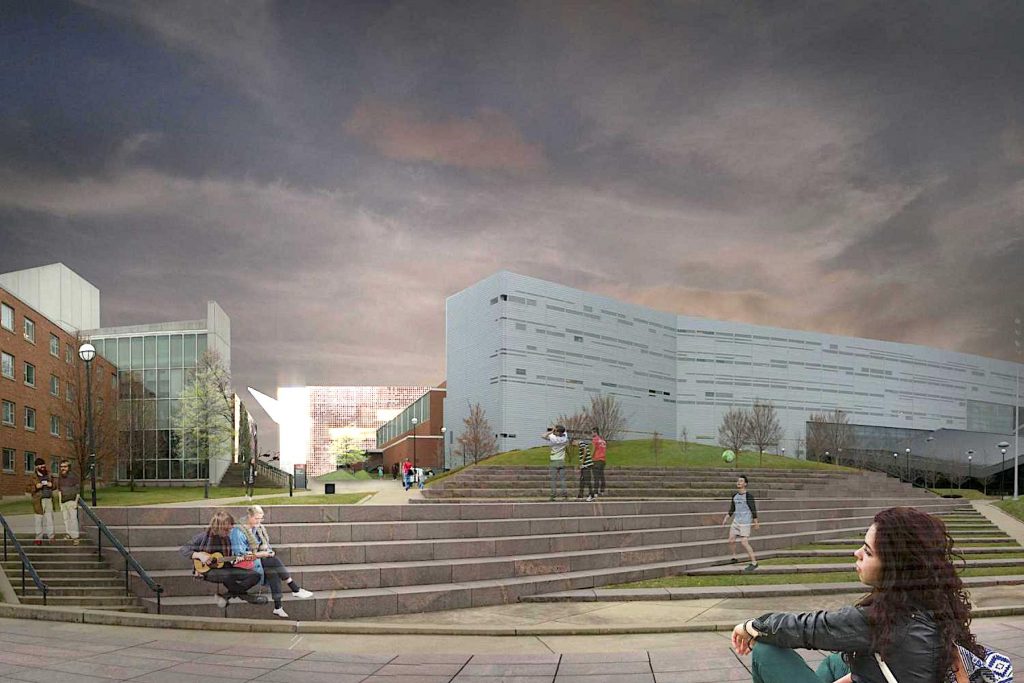
Surrounding area with arena in the distance Above images: ©emersion DESIGN
JC: Yes, that was really really a very nice collaboration. AECOM’s experience was with arenas; so they brought the sports expertise. We mainly were charged with the design of its relationships to the surroundings.
JC: But I wanted to circle back to something you said to JT about wanting to make sure that folks knew that Covington isn’t just some kind of backwater. And that’s so important that competitions can really help with, and that’s to be ambitious.
One thing about competitions, and having the fortunate experience I’ve had, I’ve really learned that being ambitious for your client and society is hugely important. If you don’t look at the big picture, and see what is really possible and shoot for that, you’re just going to come up with something mediocre.
JTS: You just don’t appreciate all the steps an entire community takes as a result of a competition.
JC: To set the bar high.
JC: It’s something we do as a standard practice: starting our encounters with clients by understanding what their mission statement is, what they see as their future value to society in the context of what their future of their sector will need. If you start with that you can start to hone in on the ambitions that are rooted in the larger context, that will make it a more robust solution.
For if you just look at the small stuff, you’re going to have the client spend a lot of money on something that will miss strategic external factors. And that was what we helped NASA with just recently.
JTS: In Covington that was the case when I worked for a Community College downtown. I pushed for it to be located downtown in the heart of our city. As a result of that the county library system saw the opportunity to expand the library, connecting it and providing services to the Community College, which was just across the street. So we created the synergy, because we had the larger vision of what we wanted the Community College to do in terms of its impact on our city.
JC: One of the things I want to make clear is that I was one of the founding members of Emersion, and I sold my ownership to some really great younger folks in the firm. Although I am currently a contractor to Emersion on various projects, I do not in any way speak for the firm.
COMPETITIONS: This is the first time we have had both the client and the architect sit in on an interview, and I believe it was very productive.
Cincinnati Art Museum – Café and Courtyard (2004)
KZF with Hargreaves Associates (landscape and fountain design)
Cincinnati Art Museum – Art Climb (completion 2020)
emerson DESIGN in collaboration with Landscape Architect, Human Nature
Photo: Phil Armstrong – Cincinnati Refined Photos
Cincinnati Art Museum – Longworth Wing
emersion DESIGN (2013)
James Cheng, RA, LEED, who was responsible for the winning entry in the 1993 Covington Gateway competition, graduated from Cornell University with a degree in Architecture, was with KZF Architecture in Cincinnati, rising to a managerial capacity, and one of five founders of Emersion Design, also in Cincinnati, presently a firm with forty employees.
J.T. Spence, PhD, AICP, is currently a tenured professor at Thomas More University, where he is Program Director of Political Science. He received his BA from George Mason University, Master of Community Planning from the University of Cincinnati, and PhD in Political Science from the University of Cincinnati. He was Covington’s city planner from 1990-1995 when the Covington Gateway competition took place (1993/94).



























